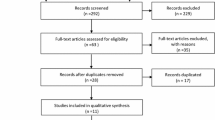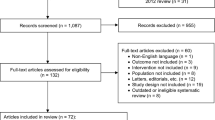Abstract
Purpose
To compare the heart rate increase side effect of different antimuscarinic drugs used in overactive bladder (OAB).
Methods
Overall 341 patients were consecutively randomized to take seven different antimuscarinic drugs between January 2014 and June 2016 at three institutions, and 250 patients who completed the follow-up visits were accepted into this study. Ninety-one patients who never came to visits were excluded. Drugs were classified into two groups as selective (darifenacin hydrobromide, solifenacin succinate and oxybutynin hydrochloride) and non-selective (fesoterodine fumarate, tolterodine tartrate, trospium chloride and propiverine hydrochloride) antimuscarinic drugs. The cardiac pulse rates and the blood pressures were recorded during the baseline, first visit (1 week) and second visit (1 month). Data were compared for drugs and two groups (selective versus non-selective) by using ANOVA test.
Results
Baseline characteristics were similar among the patients using different antimuscarinic drugs. Statistically significant increase in heart rate occurred in patients treated with non-selective antimuscarinic drugs compared to those treated with selective drugs (p < 0.001), and this increase was especially evident in patients treated with trospium chloride, tolterodine tartrate, fesoterodine fumarate and propiverine hydrochloride (p < 0.001, 0.003, 0.011 and 0.37, respectively). There was no statistical difference for the other side effects.
Conclusions
Our results showed that heart rate significantly increased in OAB patients treated with non-selective antimuscarinic drugs. Trospium chloride, tolterodine tartrate, fesoterodine fumarate and propiverine hydrochloride seem to have the most unfavorable properties with regard to increased heart rate side effect when compared to the other antimuscarinic drugs (darifenacin hydrobromide, solifenacin succinate and oxybutynin hydrochloride).


Similar content being viewed by others
References
Abrams P, Cardozo L, Fall M et al (2002) The standardisation of terminology of lower urinary tract function: report from the Standardisation Sub-committee of the International Continence Society. Neurourol Urodyn 21:167–178
Milsom I, Abrams P, Cardozo L et al (2001) How widespread are the symptoms of an overactive bladder and how are they managed? A population-based prevalence study. BJU Int 87:760–766
Stewart WF, Van Rooyen JB, Cundiff GW et al (2003) Prevalence and burden of overactive bladder in the United States. World J Urol 20:327–336
Safarinejad MR (2009) Prevalence of the overactive bladder among Iranian women based on the International Continence Society definition: a population-based study. Int Urol Nephrol 41(1):35–45
Hashim H, Beusterien K, Bridges JF, Amos K, Cardozo L (2015) Patient preferences for treating refractory overactive bladder in the UK. Int Urol Nephrol 47(10):1619–1627
Abrams P, Andersson KE, Buccafusco JJ et al (2006) Muscarinic receptors: their distribution and function in body systems, and the implications for treating overactive bladder. Br J Pharmacol 148:565–578
Andersson K-E, Campeau L, Olshansky B (2011) Cardiac effects of muscarinic receptor antagonists used for voiding dysfunction. Br J Clin Pharmacol 72:186–196
Harvey RD, Belevych AE (2003) Muscarinic regulation of cardiac ion channels. Br J Pharmacol 139:1074–1084
Hozawa A, Ohkubo T, Kikuya M et al (2004) Prognostic value of home heart rate for cardiovascular mortality in the general population: the Ohasama Study. Am J Hypertens 17:1005–1010
Jouven X, Empana JP, Escolano S et al (2009) Relation of heart rate at rest and long-term (> 20 years) death rate in initially healthy middle-aged men. Am J Cardiol 103:279–283
Hsia J, Larson JC, Ockene JK et al (2009) Resting heart rate as a low tech predictor of coronary events in women: prospective cohort study. BMJ 338:b219
Chapple CR, Khullar V, Gabriel Z, Muston D, Bitoun CE, Weinstein DA (2008) The effects of antimuscarinic treatments in overactive bladder: an update of a systematic review and metaanalysis. Eur Urol 54:543–562
Novara G, Galfano A, Secco S et al (2008) A systematic review and meta-analysis of randomized controlled trials with antimuscarinic drugs for overactive bladder. Eur Urol 54:740–763
Cetinel B, Onal B (2013) Rationale for the use of anticholinergic agents in overactive bladder with regard to central nervous system and cardiovascular system side effects. Korean J Urol 54(12):806–815
Tarcan T, Mangir N, Ozgur MO, Akbal C (2012) Validation study of Turkish version of OAB-V8 overactive bladder questionnaire. Uroloji Bulteni 21:113–116
Andersson KE, Sarawate C, Kahler KH et al (2010) Cardiovascular morbidity, heart rates and use of antimuscarinics in patients with overactive bladder. BJU Int 106:268–274
Zinner N, Gittelman M, Harris R, Susset J, Kanelos A, Auerbach S, Trospium Study Group (2004) Trospium chloride improves overactive bladder symptoms: a multicenter phase III trial. J Urol 171:2311–2315
Rudy D, Cline K, Harris R, Goldberg K, Dmochowski R (2006) Multicenter phase III trial studying trospium chloride in patients with overactive bladder. Urology 67:275–280
Breuel HP, Mürtz G, Bondy S, Horkulak J, Gianetti BM (1993) Safety and tolerance of trospium chloride in the high dose range. Arzneimittelforschung 43:461–464
Olshansky B, Ebinger U, Brum J et al (2008) Differential pharmacological effects of antimuscarinic drugs on heart rate: a randomized, placebo-controlled, doubleblind, cross-over study with tolterodine tartrate and darifenacin in healthy participants> or = 50 years old. J Cardiovasc Pharmacol Ther 13:241–251
Olshansky B, Spierings E, Brum J et al (2009) Validation of the differential cardiovascular effects of the antimuscarinic agents, darifenacin and tolterodine tartrate, in a randomized, placebo-controlled, 3-way crossover study. UroToday Int J. https://doi.org/10.3834/uij.1944-5784.2009.08.07
Schiffers M, Sauermann P, Schurch B, Mehnert U (2010) The effect of tolterodine tartrate 4 and 8 mg on the heart rate variability in healthy subjects. World J Urol 28:651–656
Chapple C, Van KP, Tubaro A et al (2007) Clinical efficacy, safety, and tolerability of once-daily fesoterodine in subjects with overactive bladder. Eur Urol 52:1204–1212
Abrams P, Cardozo L, Chapple C, Serdarevic D, Hargreaves K, Khullar V (2006) 1032 study group. Comparison of the efficacy, safety, and tolerability of propiverine and oxybutynin for the treatment of overactive bladder syndrome. Int J Urol 13:692–698
Michel MC, Wetterauer U, Vogel M, de la Rosette JJMCH (2008) Cardiovascular safety and overall tolerability of solifenacin in routine clinical use. Drug Saf 31(6):505–514
Chapple CR, Abrams P (2005) Comparison of darifenacin and oxybutynin in patients with overactive bladder: assessment of ambulatory urodynamics and impact on salivary flow. Eur Urol 48:02–9
Author information
Authors and Affiliations
Contributions
BC contributed to protocol/project development, manuscript writing/editing. BO, MHG helped with protocol/project development, data collection or management, data analysis, manuscript writing/editing. MG, FAT, MD involved in data collection or management.
Corresponding author
Ethics declarations
Conflict of interest
Authors of this study have no conflict of interest.
Ethical approval
This open-label, prospective, multi-center, randomized and controlled follow-up study has institutional approval from Cerrahpasa School of Medicine Ethical Commitee with IRB number of 671/2014.
Additional information
Publisher’s Note
Springer Nature remains neutral with regard to jurisdictional claims in published maps and institutional affiliations.
Rights and permissions
About this article
Cite this article
Cetinel, B., Onal, B., Gultekin, M.H. et al. Which antimuscarinic agents used in the treatment of overactive bladder increase heart rate? a prospective randomized clinical trial. Int Urol Nephrol 51, 417–424 (2019). https://doi.org/10.1007/s11255-019-02090-9
Received:
Accepted:
Published:
Issue Date:
DOI: https://doi.org/10.1007/s11255-019-02090-9




